Large Gorgeous Rare Steiff 5xJointed Papa Lion ID
$279.00 Original price was: $279.00.$98.99Current price is: $98.99.
- Quality You Can Count On
- 100% High-Quality Guarantee
- 7 days free returns
- We take quality seriously.

Papa Lion (the name Steiff gave him [“Loewen Papa” in German]) looks anything but ferocious. He joins his little brother in my shop, about whom the same thing can be said. Both sizes of this lion are rare, although this one is a little less so, since he was made both before and after the little guy, but there are just a few years on either side. The LAST year Papa was made was 1961, and even if he is that young, he is over 60! Papa’s earliest production date would have been 1953 (although he was made starting in 1949). I say 1953 because of the blue printing on his chest tag. Even a birth date as “late” 😉 as 1953 could mean that Papa is from the earliest series. Although that series started in 1949, it was made until 1954.
There are three article numbers that could have been printed on Papa’s flag, and there is a “22” in each of them, indicating his size in centimeters. He is actually a bit shorter than that, measuring 20 cm to the top of his head, a little less than 8 inches. You also should know his front-to-back measurement so you know that the depth of his display area can accommodate him. From his nose to the place where his tail hits the ground naturally, Papa is 14 inches long. Of course, you could display him facing sideways, which would not require that much depth.
Papa is in excellent-minus condition. I will get the “minus” out of the way really fast. He has some thinning in his longer mohair areas—although two of those—his mane and his chin are really not that bad. His mane can be brushed in such a way such that the thinning is camouflaged. I stupidly thought of that AFTER all my pictures were taken. Some of the apparent thinning on Papa’s mane is due to the “flow” of the mohair. It heads downward in some places and upward in others, leaving the space in between looking thin. If you moisten it before you brush it, you can change to flow to some extent. The thinning on Papa’s chin is not that readily camouflaged. The hair there is just a bit longer than his body hair and does not allow for rearranging the way his mane does. On the other hand, the fabric under the mohair on his chin is the same brilliant white as his beard, so any loss is not that apparent.
Papa has a really inconsequential narrow area of thinning on his forehead. That is so trivial so as not to impinge further on my rating of his condition, which, of course, is DESPITE his age, not the meaningless “for his age.”
The long “pouf” of hair at the end of Papa’s tail has the most thinning. Granted, you really can’t do much about that, but that is the main (not the “mane” ;-)) area of thinning, and with all of Papa’s wonderful other features, his tail pouf is not a major consideration.
I do want to say something else about Papa’s tail, but I don’t count what I am about to tell you as a condition issue per se, since I believe it stems from a design defect. Papa’s tail does look fairly nice as it extends from his behind to the “floor” of his display area, but I had to rework the internal stuffing by “massaging” his tail to get it to look that way, a fairly easy thing to do. Papa was doing fine until I posed him seated, and you can see the stress that puts on his tail. It might have been better to have his tail start higher on his back, although I am not sure if that would solve much. In any case, it would be silly to fill out his tail with a new infusion of excelsior, since his tail would flatten as soon you put him in a seated position. If you would only want to display him standing, he looks fine with his tail the way it is now. My rule about restoration is not to do anything whose value as an improvement does not outweigh the risk of making an invasive repair. This would be a case in point.
I got sidetracked! You should be able to see how wonderful Papa looks; his main gold color could not have been any darker all those decades ago when he left Giengen. Nor could his airbrushed accents have been any stronger! His lustrous red floss nose looks new, and his BLACK nostrils complete the picture.
If you look closely at Papa’s chest tag you will see the crease that goes across the bear’s face. There is nothing that would make the crease disappear, but I reinforced the back of the tag, making it crisp to the touch. The rest of the tag was already crisp, so I have just brought it back to what it used to be. You would not see the crease when Papa is on display, as you looked at him admiringly from a typical viewing distance. Another thing you would not “SEE” when Papa is on display is the fact that he no longer roars. His belly does make noise when you press in on his now-silent squeaker, but that is the crunch of his excelsior filling. As always, I count a non-working squeaker very low on my condition hierarchy, and if you want to make it part of the “minus,” you can do that. 😉
I alluded to Papa’s joints when I talked about putting him in a seated pose, but that discussion focused on his tail. His joints are very important, and I am happy to say they are probably (or nearly) as tight as they were 60+years ago when Papa left Giengen. His healthy joints don’t mean that posing him is a breeze. Any difficulty (which you will soon learn how to overcome) you may find in posing him is because Steiff gave him a goofy anatomy. Notice that his front legs are angled inward toward each other, and his rear legs are almost parallel. Although you can, if you want to spend a lot of time doing so, pose him so that he is nearly standing erect, as I have in most of my images, as a matter of fact. But the easiest thing is to move his front legs as if he is taking a step forward, and he will stay that way forever if you want him to. Another feature to Papa’s anatomy that contributes (but not as much as the different angling of his legs) is the fact that his rear hip joints are higher on his back than his front hip joints, making his rear legs longer too. In any case, Papa’s healthy joints are just one of his many features that contribute to his almost-excellent condition.
If you still have a question about anything, please write, but I have tried to be complete in my description (Yes, he has six whiskers on each side of his nose, but they do not symmetrically leave each side of his face. ;-)).
Papa is a gorgeous example of this rare cat, and I hope my words and pictures have shown you what a fantastic addition he would make to a serious collection—whether that collection is yours or the one belonging to that special Steiff person in your life who would receive him as a gift.
WHATEVER YOU DECIDE TO DO ABOUT PAPA OR ANY OF MY OTHER STEIFF ITEMS, PLEASE BE SURE TO SEE THE ARTICLE I HAVE WRITTEN ABOUT STEIFF ID FRAUD—INCLUDING COUNTERFEIT CHEST TAGS—(AND OTHER IMPORTANT INFORMATION FOR COLLECTORS). YOU WILL FIND THE LINK ON THE BOTTOM RIGHT OF MY SHOP HOME PAGE UNDER “FAVORITE LINKS.” IF YOU HAVE NOT LOOKED AT IT RECENTLY, I UPDATED AND EXPANDED IT IN MARCH, 2023.
| ITEM ID | rl-2756 |
|---|---|
| COLOR | Gold, Maroon, White |
| ITEM TYPE | Vintage |
| FINE PLUSH AGE | Post 1950 |
Be the first to review “Large Gorgeous Rare Steiff 5xJointed Papa Lion ID” Cancel reply
Related products
Dolls
Rare HUGE Unusual Steiff Display Animal Schautier Baby Wild Boar Frischling ID Free US Shipping















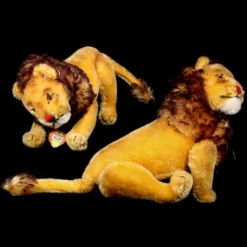



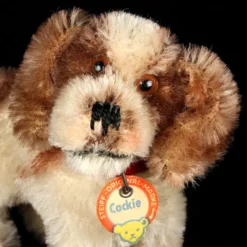
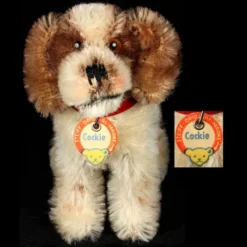

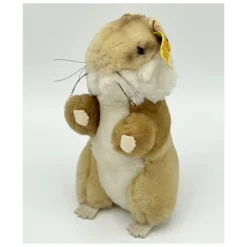

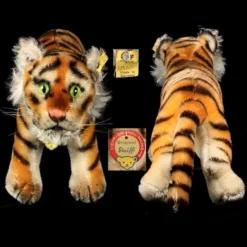

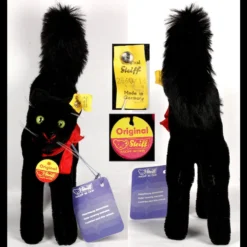

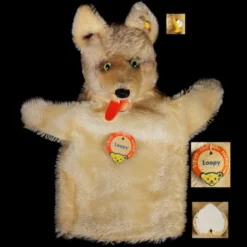

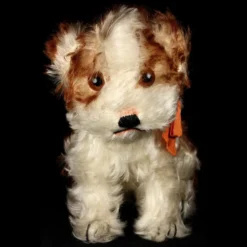
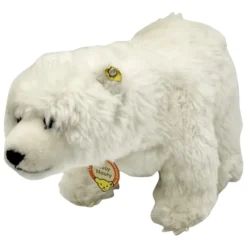
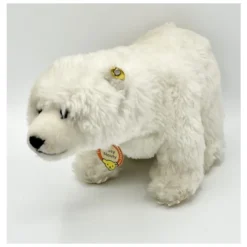
Reviews
There are no reviews yet.